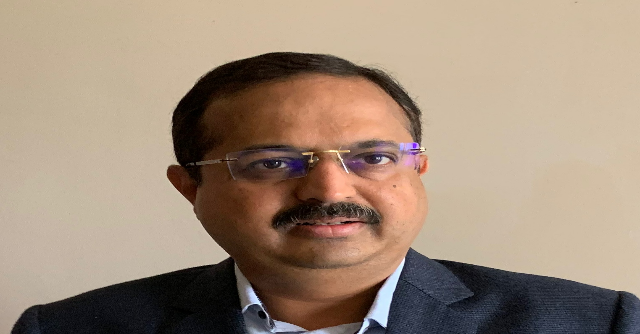
AI, power, and sustainability: Inside Colt DCS’s data centre strategy in India


UK-based data centre company Colt DCS formed a joint venture with real estate firm RMZ Group in a deal valued at $1.7 billion, last year in November. Colt has launched two data centre facilities in Navi Mumbai and Chennai. A third such facility is also in the works, details of which are yet to be revealed.
“The JV is structured as a 50:50 partnership. RMZ is responsible for project delivery, permitting, and land acquisitions, while Colt leads on design, engineering, operations, and sales. A few functions are handled jointly. Importantly, RMZ is also investing in our assets in Mumbai and Chennai,” said Pratap Mane, President & Country Head - India, in an interview with TechCircle.
Mane noted that the company said it began its journey in 2020, just before the pandemic, when it acquired a 15-acre plot in Navi Mumbai to build its first data center campus. It added that Phase One of the project went live in September 2023, delivering a capacity of 24 MW, with 4 MW launched the previous year once the cooling systems were fully ready.
The Navi Mumbai campus, once fully built, would be able to deliver up to 134 MW of capacity. While Phase One is currently serving enterprise customers, it is also engaging with hyperscale clients due to its global relationships with major cloud providers.
In addition, the company acquired land in Chennai in 2024 for a new 96 MW campus, which is currently in the design and permitting stage. Groundbreaking is expected by the end of the year, and Phase One in Chennai will start with around 40 MW, developed in multiple stages, with further expansion planned over time, Mane added.
On being asked why Mumbai and Chennai were favoured among other cities for establishing Colt’s data centres, Mane said, “For anyone entering India to set up data centers, Mumbai has been the first choice, followed by Chennai, which accounts for about 25% of the market. The key driver in both cities has traditionally been the availability of reliable power.”
Elaborating further, he said that in Mumbai, for example, a 15-kilometer stretch has become the hub for data centers. Historically, this belt housed heavy industries like pharma, which already had strong grid connectivity through state utilities such as MAHADISCOM. Data center operators naturally followed. Similarly, in Chennai, the Ambattur industrial area offered abundant power, making it the preferred location for data center development.
Optimising consumption and promoting sustainability
Data centres are infamous for guzzling enormous amounts of water and electricity. A recent S&P report revealed that India is among the five leading markets in Asia-Pacific for datacenter electricity demand, with 13 TWh of power demand in 2024.
However, Mane said that India has a distinct advantage compared to other regions for power availability along with growing renewable energy options. “For instance, Singapore faced saturation and even imposed a temporary ban on new data centers due to power constraints, though that ban has since been lifted. In contrast, India not only has abundant power but also a strong push towards renewable energy, which is already part of our roadmap. Most data center operators are actively exploring ways to transition to renewables,” he said.
Colt’s approach to sustainability begins at the design stage, focusing on PUE (Power Usage Effectiveness) by optimising equipment and power consumption from the outset. As capacity scales, the company plans to sign power purchase agreements (PPAs) for renewable energy to further reduce its footprint. Mane also noted that it aligns with Scope 2 emission targets to ensure operations become progressively more sustainable.
He added that Colt is cognisant of the fact that AI will be a major driver of data centre growth globally and is preparing for it by incorporating design changes. AI workloads demand significantly higher power and cooling capacity. For instance, GPU power requirements have jumped from around 120 kilowatts to as high as 300 kilowatts. This means the facilities must be designed to handle far greater energy and thermal loads.
“To meet these needs, we are factoring in elements such as increased building heights, over six meters of clear height, to accommodate liquid cooling solutions. We are also rethinking structural loading and ensuring our PUE metrics stay efficient. In short, a range of design modifications is being integrated to future-proof our facilities for AI workloads.”
All these changes and modifications naturally weighs heavily on the pricing model for the customers. However, Mane maintains that Colt’s pricing is competitive, particularly for hyperscalers, with rates largely staying constant over the past two to three years.
He noted that the real pressure comes from rising capital expenditure. With ongoing design enhancements and value engineering, costs are increasing while selling prices are not rising proportionately, putting returns on investment under pressure. He further emphasised that data centers are a long-term investment, not a short-term model, requiring a horizon of 20 years or more to realize their full potential.

